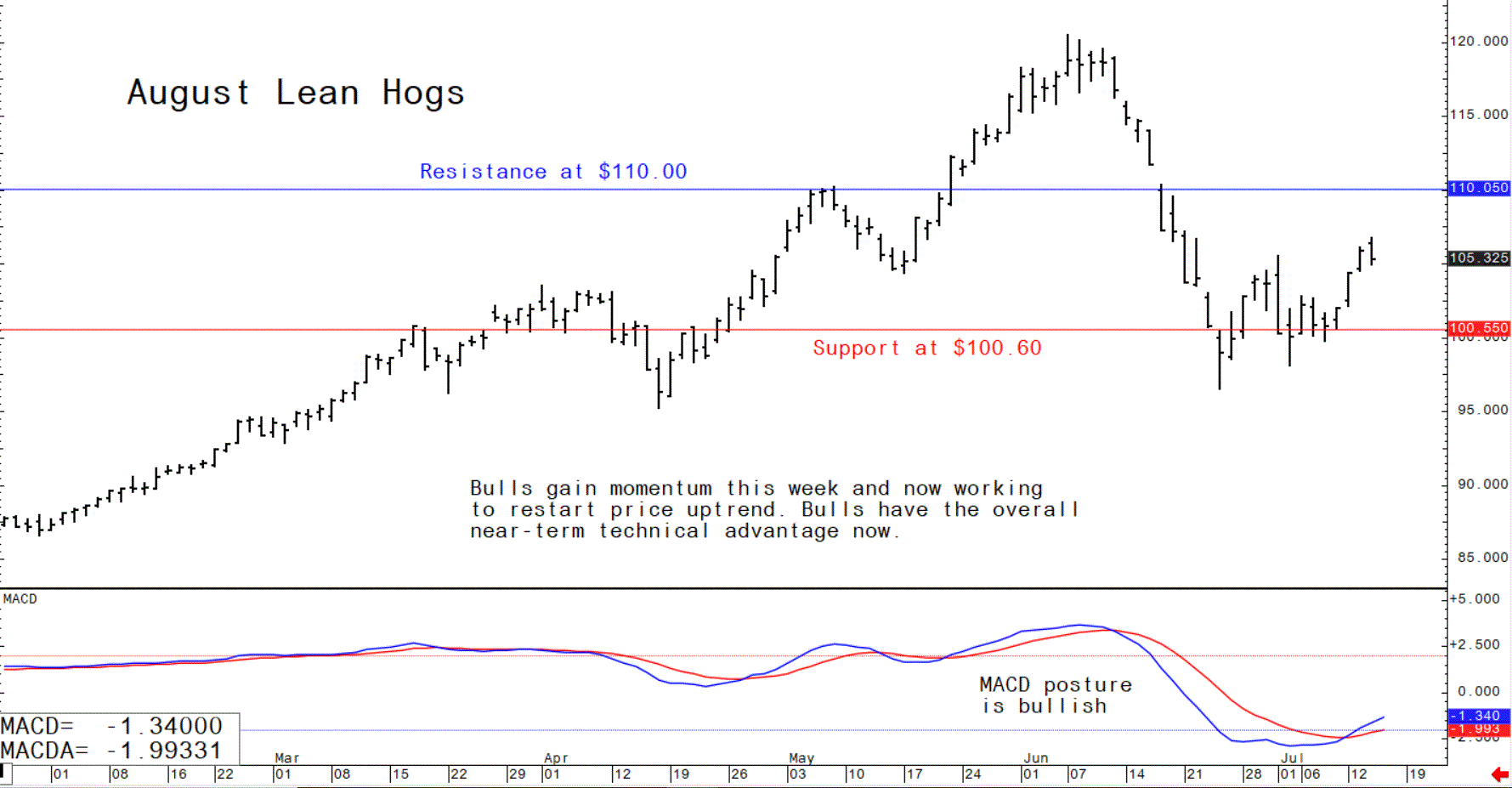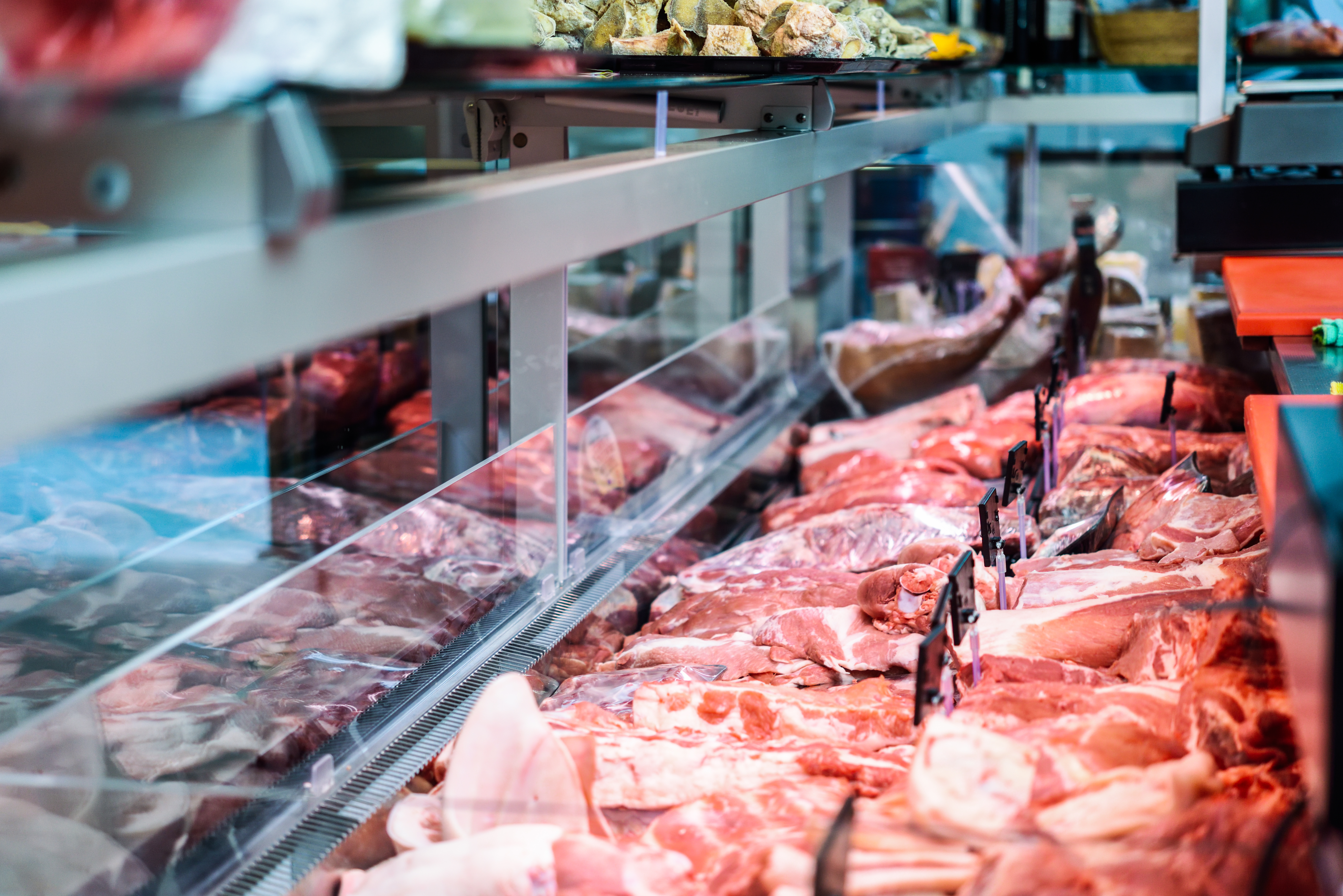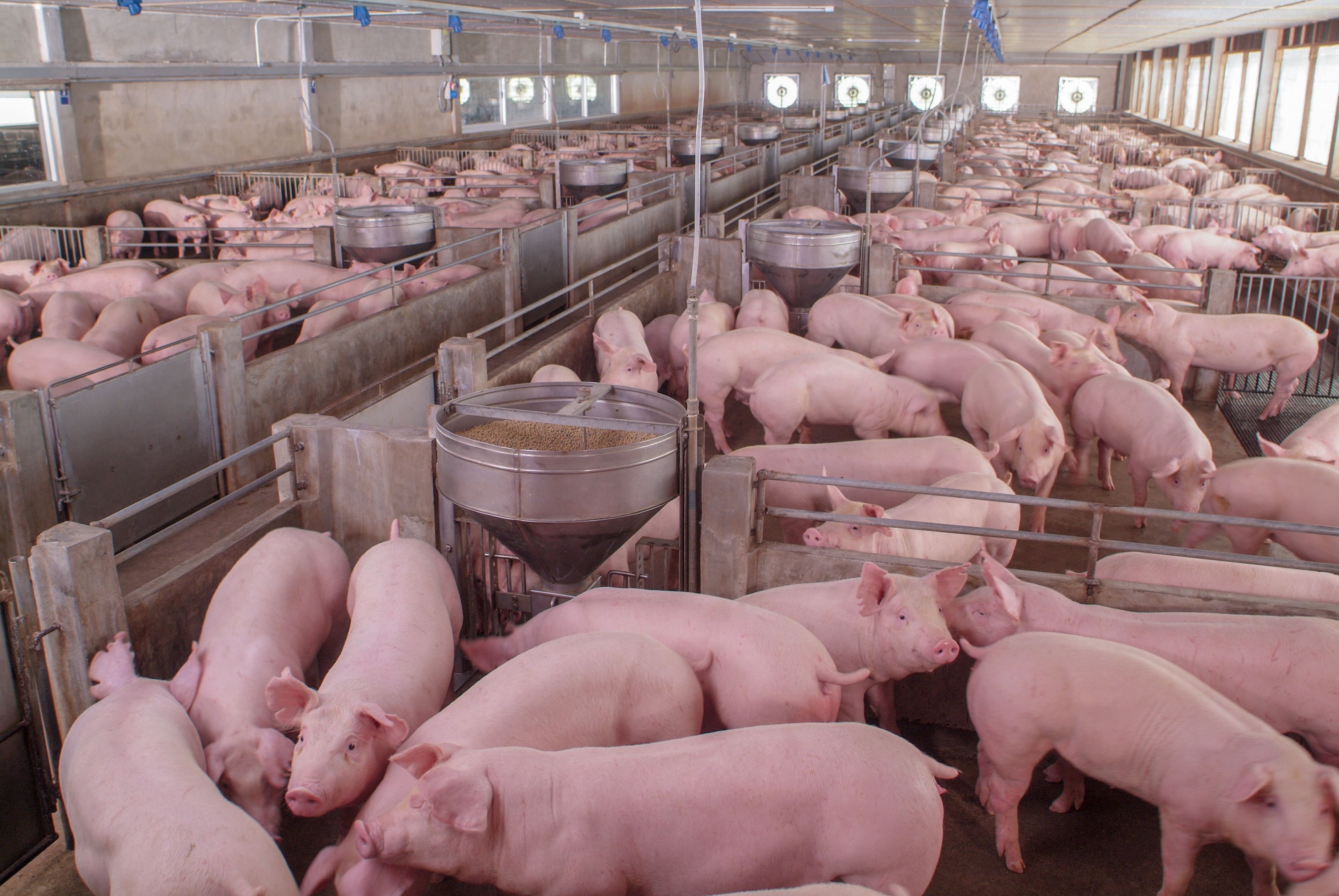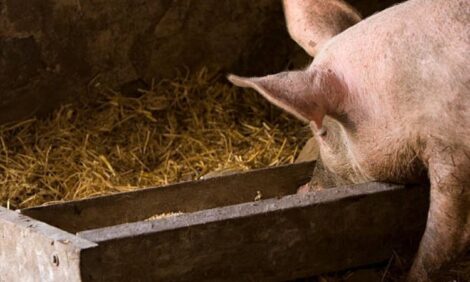



Pig outlook: lean hog futures bulls back in business
US pig prices rebound this week as the economic outlook from China grows stronger.The pig trader's perspective
August lean hog futures prices this week hit a three-week high and have made a strong rebound from the June low, to suggest more upside price action in the near term.

© Jim Wyckoff
The lowest US hog slaughter levels of the year paired with strong consumer demand should continue to lift prices. Pork production the week ending 10 July dropped 16.2% from the week prior (though that did include some holiday downtime), with average hog weights diving 21 lbs for the week.
Recent reports of new cases of ASF in China have once more amplified attention on Chinese demand, but a surge in China’s second-quarter pork production could dampen near-term export prospects. Still, good US retail and consumer demand at present, and good supplies moving through the pipeline, suggest that cash and futures markets can continue to move up.
The next week’s likely high-low price trading ranges
- August lean hog futures-$102.10 to $110.00 and with a higher bias
- December soybean meal futures-$355.20 to $383.50, and with a sideways-higher bias
- December corn futures-$5.20 to $5.80 and a sideways-higher bias
Latest news from the USDA
USDA sees higher global pork output
The US Department of Agriculture this week said in its monthly supply and demand report global pork production for 2021 is revised up nearly 4% from April to 105.1 million tonnes primarily on higher production in China which was raised 8% to 43.8 million tonnes.

Since early 2021, China hog slaughter has been strong and carcass weights higher. Rebounding pork production at a time of weak seasonal demand has caused prices to drop rapidly, prompting liquidation of animals as Chinese producers have sought to protect margins. However, the reported culling of breeding animals, continued productivity challenges, and weaker producer margins are expected to slow China production growth later in the year.
Global pork exports for 2021 are revised up 2% to 11.8 million tonnes on higher estimates for all major exporters. China imports continue to underpin global trade and are raised 3% to 5.0 million tonnes. Meanwhile, Philippines imports are revised up 21% to 425,000 tonnes on lower tariffs and a continued ASF-induced supply deficit. Mexico imports are raised nearly 3% to 985,000 tonnes on high domestic prices, a stronger peso, and as an offset to strong exports.

US pork weekly exports sales disappoint
USDA Thursday morning reported US pork net sales of 10,600 metric tonnes (MT) reported for 2021 were down 76% from the previous week and 68% from the prior four-week average.
Increases primarily for Mexico (5,300 MT, including decreases of 1,100 MT), Japan (3,100 MT, including decreases of 200 MT), Honduras (900 MT), Colombia (800 MT, including decreases of 100 MT), and Chile (500 MT), were offset by reductions primarily for China (1,300 MT).
Exports of 25,200 MT-a marketing-year low-were down 17% from the previous week and 25% from the prior four-week average. The destinations were primarily to Mexico (11,400 MT), China (4,900 MT), Japan (3,500 MT), Canada (1,300 MT), and South Korea (1,200 MT).

USDA provides details on animal depopulation/disposal assistance
Livestock and poultry producers who suffered losses during the COVID-19 pandemic due to insufficient access to processing can now apply for assistance for those losses and the cost of depopulation and disposal of animals, USDA announced Tuesday 13 July. This is part of the Pandemic Livestock Indemnity Program (PLIP) unveiled by Ag Secretary Tom Vilsack in Wisconsin Dells. Producers can apply for aid from 20 July through 17 September.
Payments will be based on 80% of the fair market value of the livestock and poultry and for the cost of depopulation and disposal of the animal from 1 March 2020, through 26 December 2020. Payments will be based on a single payment rate per head.
USDA details, “PLIP payments will be calculated by multiplying the number of head of eligible livestock or poultry by the payment rate per head, and then subtracting the amount of any payments the eligible livestock or poultry owner has received for disposal of the livestock or poultry under the Natural Resources Conservation Service Environmental Quality Incentives Program or a state program. The payments will also be reduced by any Coronavirus Food Assistance Program (CFAP 1 and 2) payments paid on the same inventory of swine that were depopulated.
USDA says it has set aside “up to $50 million in pandemic assistance funds to provide additional assistance for small hog producers that use the spot market or negotiate prices. Details on the additional targeted assistance are expected to be available this summer.”
Eligible livestock must have been depopulated from 1 March 2020, through 26 December 2020, due to insufficient processing access because of the pandemic. Livestock must have been physically located in the US or a territory of the US at the time of depopulation. Eligible livestock owners include persons or legal entities who, as of the day the eligible livestock was depopulated, had legal ownership of the livestock. Packers, live poultry dealers and contract growers are not eligible for PLIP.
PLIP payments compensate participants for 80% of both the loss of the eligible livestock or poultry and for the cost of depopulation and disposal based on a single payment rate per head. PLIP payments will be calculated by multiplying the number of head of eligible livestock or poultry by the payment rate per head, and then subtracting the amount of any payments the eligible livestock or poultry owner has received for disposal of the livestock or poultry under the Natural Resources Conservation Service (NRCS) Environmental Quality Incentives Program (EQIP) or a state program. The payments will also be reduced by any Coronavirus Food Assistance Program (CFAP 1 and 2) payments paid on the same inventory of swine that were depopulated.
There is no per person or legal entity payment limitation on PLIP payments. To be eligible for payments, a person or legal entity must have an average adjusted gross income (AGI) of less than $900,000 for tax years 2016, 2017 and 2018.

Swine industry news from China
Chinese pork production hits seven-year high
During the second quarter of 2021, China’s pork production shot to a seven-year high of 13.46 million metric tonnes (MMT), up 40% from Q2 of 2020 and well above the usual 10 MMT produced for the quarter, according to a Reuters analysis of data from China’s National Bureau of Statistics.
The bureau said Chinese pork output surged 35.9% from year-ago in the first half of 2021 to 27.15 MMT. It also reports China slaughtered 337.42 million hogs the first half of 2021, a 34% jump from last year. Normally, the second quarter is a period of low consumption and production, but this year, big producers ramped up production in the wake of African swine fever (ASF).
Sales data from 16 listed hog producers showed they produced 42.8 million hogs for slaughter in the first half of 2021, more than a 100% surge over the prior year, Boya Consulting said in a report on Wednesday. Some provinces are still dealing with ASF outbreaks, accelerating slaughter and encouraging others to produce overly heavy hogs that came to market during the April-June quarter. China’s statistics bureau reports China’s hog herd stood at 439.11 million head at the end of June, up 29% from year-ago.

China’s meat imports rising
China imported 743,000 MT of meat in June, a 17% retreat from year-ago levels, Chinese customs data showed. That was also a 5.8% retreat from shipments of 789,000 MT in May.
Weak domestic pork prices slowed China’s demand for imports. For the first half of 2021, China has imported 5.08 MMT of meat, topping last year’s 4.75 MMT at this point by 6.9%.
China removes restrictions for its small hog farms
China’s ag ministry announced it will no longer require small pig farms to receive environmental approval from the government before breeding pigs. This is part of China’s ongoing effort to rebuild its hog herd after African swine fever halved the country’s hog herd.
The outbreak hit small producers particularly hard, with this summer’s dive in hog prices said to be forcing small producers out of business. There is still no vaccine for the virus and outbreaks of ASF continue in northern China and Southwest Sichuan province.









